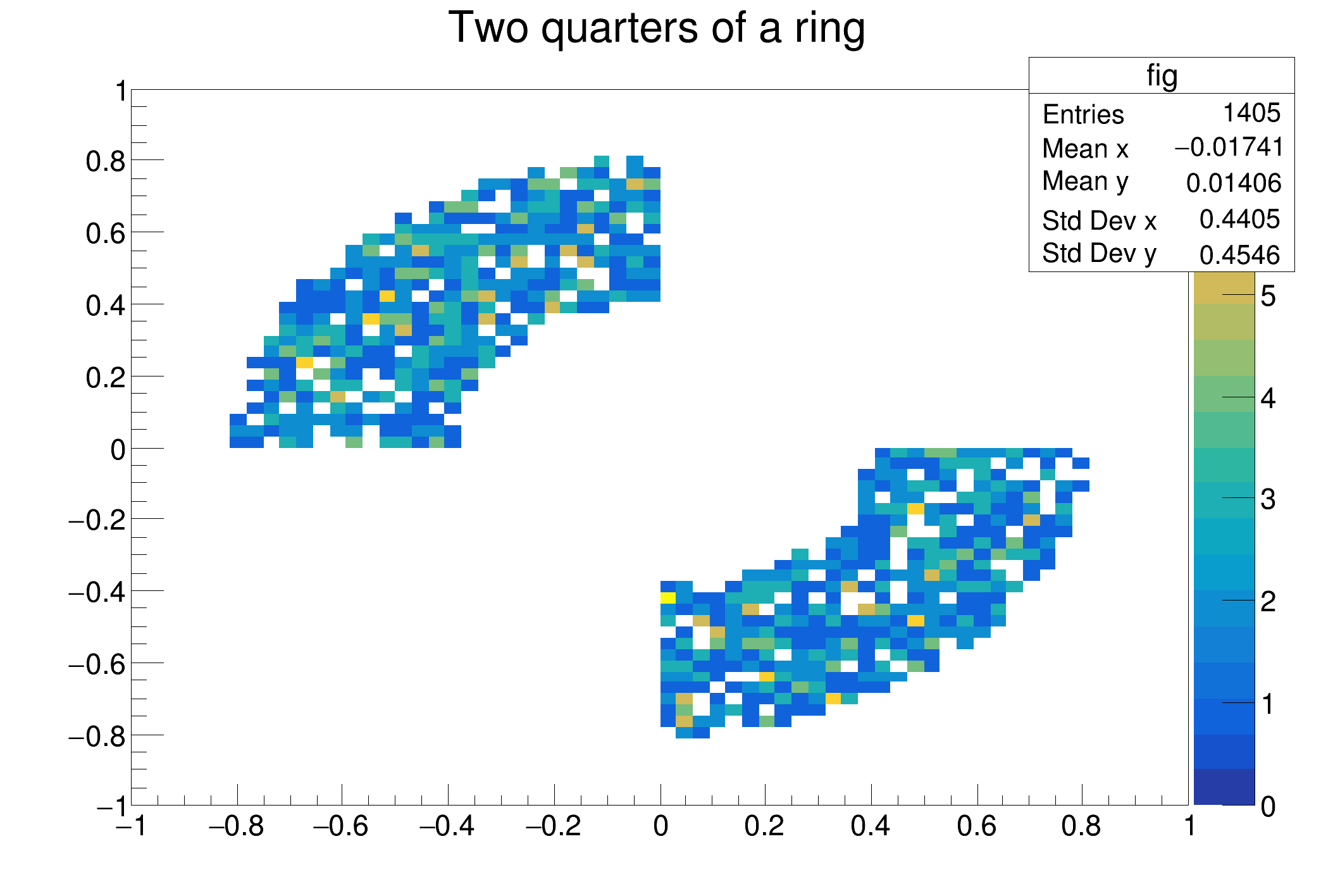
 Process collections in RDataFrame with the help of RVec.
Process collections in RDataFrame with the help of RVec.
This tutorial shows the potential of the VecOps approach for treating collections stored in datasets, a situation very common in HEP data analysis.
import ROOT
coordDefineCode = '''ROOT::RVecD {0}(len);
std::transform({0}.begin(), {0}.end(), {0}.begin(), [](double){{return gRandom->Uniform(-1.0, 1.0);}});
return {0};'''
d = df.Define("len", "gRandom->Uniform(0, 16)")\
.Define("x", coordDefineCode.format("x"))\
.Define("y", coordDefineCode.format("y"))
d1 = d.Define("r", "sqrt(x*x + y*y)")
ring_h = d1.Define("rInFig", "r > .4 && r < .8 && x*y < 0")\
.Define("yFig", "y[rInFig]")\
.Define("xFig", "x[rInFig]")\
.Histo2D(("fig", "Two quarters of a ring", 64, -1, 1, 64, -1, 1), "xFig", "yFig")
cring = ROOT.TCanvas()
ring_h.Draw("Colz")
cring.SaveAs("df016_ring.png")
print("Saved figure to df016_ring.png")
ROOT's RDataFrame offers a high level interface for analyses of data stored in TTree,...
- Date
- February 2018
- Author
- Danilo Piparo (CERN)
Definition in file df016_vecOps.py.

 Process collections in RDataFrame with the help of RVec.
Process collections in RDataFrame with the help of RVec. 